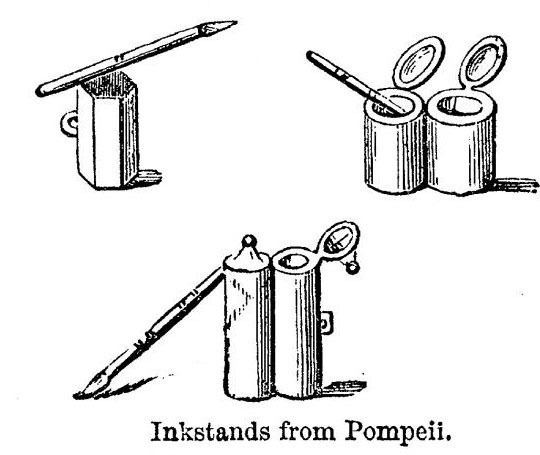 | ||
Atramentum phallusophy 2016
Atramentum or atrament, generally means a very black, usually liquid, substance. For example, an octopus may emit a puff of atrament (see cephalopod ink).
In ancient Rome, the term atramentum signified any black colouring substance used for any purpose. The Romans distinguished three principal kinds of atramentum, one called librarium (or scriptorium), another called sutorium, the third tectorium.
Atramentum librarium was the writing ink of Roman times, atramentum sutorium was used by shoemakers for dyeing leather, atramentum tectorium (or pidorium) was used by painters for some purposes, apparently as a sort of varnish.
Atramentous is a related adjective which means "black as ink". Historically, to atrament something would mean to write something down with ink. The word atrament is related to modern English atrocious: both originate from Latin atrare, which presumably meant to make something black.
According to the pigment handbook, atramentum is a historical pigment or ink based on carbon black. Apelles is credited of manufacturing method for atramentum elephantinum from burning ivory.
In one modern commercial usage of the word, atramentum is deep black coloring substance manufactured by a reaction of an iron salt with tannic acid (the tannic acid for this purpose is often extracted from oak bark). It is a historically important black dye or pigment fundamentally different from carbon black or black iron oxide pigments. It was also sometimes called "ink stone". It appears greyish-black in water but the colour becomes very deep and lustrous in linseed oil.
The iron-based atramentum called iron gall ink was in popular use from about the 12th to 19th century. It is currently a subject of conservation effort since many valuable collections are written using it but it causes ink corrosion. In Jewish tradition, scribes made use of copper sulphate crystals (copper vitriol) in writing holy writ, which did not cause the corrosion of the ink.
